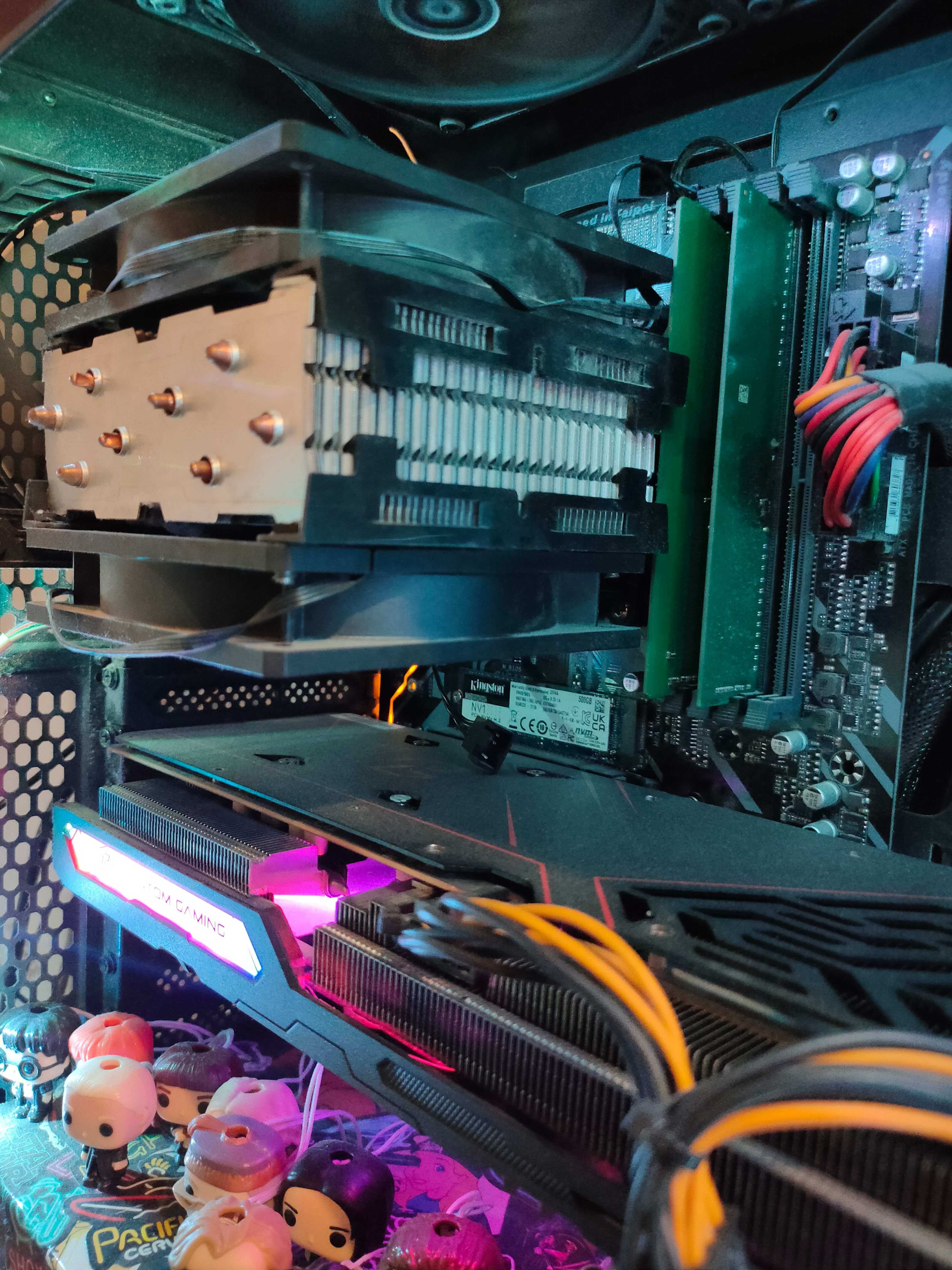Key Takeaways
- Stock coolers are sufficient for most tasks, including gaming, and provide decent cooling performance.
- Consider using the budget you allocated for an aftermarket cooler to buy a higher-tier CPU instead, as you’ll get more performance for your money.
- An aftermarket cooler can be a great long-term investment as it can be used for many years and across different builds.
Most CPUs come bundled with a half-decent stock cooler. However, some enthusiasts strongly believe that they “suck” and that you should spend an extra $50 to get an aftermarket cooler. So, is it really worth it?
You (Probably) Don’t Need an Aftermarket Cooler
Unless you plan to purchase a processor without an included cooler (more on that later), your money is better spent elsewhere. Sure, a stock cooler won’t perform as well as a fancy AIO or a mid-range aftermarket cooler, but it doesn’t need to.
Stock coolers do a decent job keeping your processor sufficiently cool while doing lighter tasks and gaming. The manufacturer wouldn’t include them otherwise. Most games still aren’t optimized enough to utilize more than a few cores anyway, which means your CPU won’t hit 100% usage and won’t go over 85°C. Besides, some stock coolers are comparable to mid-range aftermarket coolers, such as the AMD Wraith Prism that comes with Ryzen 7 CPUs.
More CPU-intensive tasks like video rendering may get your processor hot to the point that it thermal throttles, which somewhat reduces its performance. If your workflow includes a lot of CPU-intensive tasks, then an aftermarket cooler paired with a high-end processor is worth it.
Intel stock coolers still aren’t as good as AMD’s, even after the 2021 refresh, if testing by hardware publications is to be believed. Linus Tech Tips tested the new models against the old ones in its Intel stock cooler review and found a marginal difference. If you’re on Intel, a CPU cooler could be a worthwhile upgrade if you regularly see thermal throttling, or can’t reach the maximum boost clock speeds for your CPU model.
The other use case is overclocking. If you’re an enthusiast who wants to squeeze every last bit of performance out of your CPU, an aftermarket cooler is a no-brainer.
Performance Gain vs. Investment
While you can find aftermarket coolers for under $20, they aren’t exactly a significant upgrade over the stock cooler. You might see temps around 5°C lower under a full load, which is an okay improvement but nothing consequential. However, what if you used the budget allocated for an aftermarket cooler to purchase a better processor instead?
This obviously only makes sense if you’re buying a new CPU anyway, but you could opt for a newer generation or higher-tier processor, such as an Intel Core i5 instead of a Core i3. You’ll get more cores or a higher clock speed for the $50 to $100 you would have spent on an aftermarket cooler. For example, you could buy the Core i7-13700F instead of the Core i5-13500 and get two more performance cores and higher turbo clock speeds. You’ll definitely notice the 10–20% performance increase more than the slightly higher turbo speeds from an aftermarket cooler.
What About Processors Without Included Coolers?
AMD and Intel don’t ship coolers with some of their higher-end CPUs, like the Threadripper/Xeon workstation processors. The same is true for most Intel K and AMD X processors, but it’s best to read the fine print before ordering. The logic behind it is that the people who buy these chips are enthusiasts or professionals who purchase expensive coolers or build custom water cooling loops. This way, they can save some money on the cooler and pass the savings on to you.
An Aftermarket Cooler May Still Be Worth Your Money
An aftermarket cooler is one of the prime reusable PC parts—my Cooler Master Hyper T4 is on its third CPU, albeit with better fans than stock. Plus, manufacturers often continue to support their products by selling mounting brackets when a new socket comes out, so you can just keep using your old cooler. If you play your cards well, you’ll get a great deal on your processor, plus a cooler for years to come.
source
